This post is also available in: French
Settled on the banks at the mouth of the wide Tagus River, Lisbon, Portugal blends a rich maritime heritage with traditional culture and a modern vibrancy.
Lisbon is home to impressive architectural gems like the Jeronimos Monastery and the Tower of Belem, industrial complexes turned gastronomic hotspots, and narrow city streets packed with history.
My 4-day Lisbon itinerary ensures you’ll see all the highlights while in this exciting European capital, introduces you to some hidden gems, and even gets you out of the city for a day.
Lisbon is one of the oldest cities in Europe, having been settled in its current strategic location as early as the Neolithic era when Celts and indigenous Iberians would have settled on the hills at the wide mouth of the Tagus River.
During the successive occupations by the Greeks, Romans, Carthaginians, and Visigoths, Lisbon grew steadily into a major trading post. It has long enjoyed the ideal position between Europe, Britain, Northern Africa, and the Americas.
Today, cultural influences come from all over, yet there is still a strong Portuguese heritage evident in Lisbon.
Disclaimer: This post contains affiliate links. This means that should you click on certain links, and then subsequently purchase a product, I will receive a small commission. It costs nothing extra to you but helps keep my site running. Thank you for supporting me in this way.
Table of Contents
How to spend 4 days in Lisbon, things to do and see

How to Get to and from the Airport
Lisbon’s international airport, Lisbon Humberto Delgado Airport (LIS), is just 7 kilometers from the city center. It’s easy to get from the airport into the city by both metro and bus. Buses will take around 30 minutes to reach the city center, while the Aeroporto Metro takes about 20 minutes. A taxi from the airport into the city is the fastest option, but the most expensive.
I used Welcome Pickups, which hires trusted drivers for airport pick-ups. From the moment you book a driver, you will feel like a friend is picking you up at the airport. In addition to booking a driver, you can purchase extra products, like sim cards or wifi hotspots. Welcome Pickups also sells tickets to major attractions, perfect when you need to add things to your Lisbon itinerary.
Unlike a traditional taxi, all Welcome Pickups are a flat fee, meaning no hidden charges like tolls or parking. Every driver speaks English, and there’s 24/7 support and free cancellation. They’ll even monitor your flight for any delays and adjust pickup accordingly.
Click here for more information and to book your transfer.
Tip: A great way to save money and time is a 24, 48, or 72-Hour Lisbon Card that includes free admission to more than 23 attractions, many discounts and free and unlimited access to the public transportation system.
4 Days in Lisbon: Day One – An Introduction to Lisbon
Lisbon’s Baixa district is the heart of the city, designed and built following the devastating 1755 earthquake. Officially known as Baixa Pombaline, and named for its benefactor, the Baixa district is also earthquake resistant, with a number of preventative measures like high inter-terrace walls to inhibit the spread of fires and wood latticework “cages” meant to distribute earthquake forces. On your first of 4 days in Lisbon, spend time exploring this grid-like, elegant neighborhood.
Praça do Comércio

The Praça do Comércio is a large square situated on the banks of the Tagus River, in the heart of Baixa. It is still commonly known as the Terreiro do Paço, or Palace Yard because it was the site of the Royal Palace until the 1755 earthquake.
During the reconstruction, the plan called for a large square surrounded by symmetrical buildings housing governmental agencies and customs offices, all of which highlighted the economy of Lisbon – hence the new name, the Square of Commerce.
Lisboa Story Centre

The Lisboa Story Centre, located within the Praça do Comércio, is an interactive museum that allows visitors to experience Lisbon’s major events through audiovisual means. The museum introduces Lisbon’s founding through to the modern-day in a compact, 60-minute technological exhibit.
Free entry with a Lisbon Card.
Arco da Rua Augusta

Rua Augusta, one of Lisbon’s main shopping streets, ends in the Praça do Comércio. At the edge of the square is the Arco da Rua Augusta, a triumphal arch-like building towering several stories over the square below.


It is adorned with statues of Portuguese historical figures atop the columns and an allegorical group on the very top, showing Glory rewarding Valor, and Genius. Originally designed as a bell tower and built to commemorate the 1755 earthquake, the structure was transformed into an arch in the 19th century.
Free entry with a Lisbon Card.
Santa Justa Lift

The Santa Justa Lift connects the lower Baixa district with the upper Largo do Carmo. Built in the early 20th century along with several other contraptions designed to facilitate movement between the two neighborhoods, it is the only remaining vertical, conventional elevator.
Free entry with a Lisbon Card.

Rossio Square
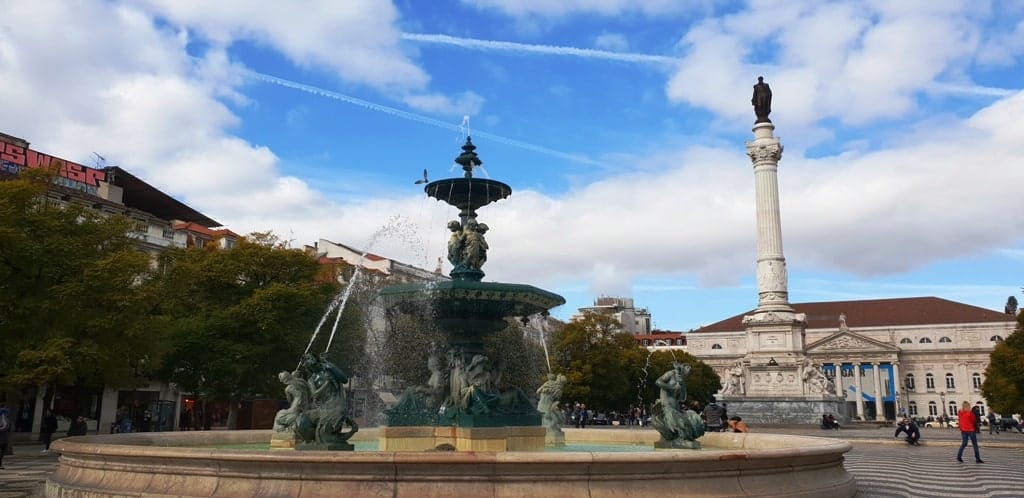
Rossio Square, also known as Pedro IV Square, has been one of the central squares in Lisbon since the Middle Ages. Located within the Pombaline-designed downtown, Rossio Square is a popular meeting point for locals. It is surrounded by shops and cafes, as well as a prominent train station and theatre.

During the 19th century, the square was popular with the upper class, who came for the theatre and the nearby public gardens; prior to that, it was the site of many a public execution. Today, it is often the site of protests or celebrations.
Praça Dos Restauradores

Praça Dos Restauradores is Lisbon’s most unique and varied square, as its home to an odd array of Neoclassical buildings alongside newer Art Deco structures like the Eden Theatre (now a luxury hotel). The quaint Elevador da Gloria is nearby, one of two trams that carry passengers into the Bairro Alto.
Other important features of the square are the Restauradores obelisk, which commemorates the independence of Portugal from Spain in 1640, and the Palacio Foz, which now houses government and tourist offices.
This afternoon, continue explorations of Lisbon’s oldest neighborhoods. Both Chiado and Bairro Alto are jam-packed with boutique shops, cafes, tourist attractions, and bars. They are located a short distance from Baixa, making them the perfect afternoon complement to a morning in Baixa.
The ruins of the Igreja do Carmo

Igreja do Carmo, or Carmo Church was devastated during the 1755 earthquake and never restored to its former glory. Today, the ruins house a small archaeology museum set within the crypts. This charming stone church, though, stands as a reminder of the earthquake even 250 years later.
Praça da Alegria viewpoint

The Praça da Alegria viewpoint is west of the historic center, north of the Bairro Alto, and has panoramic views of Baixa. It is just off the Avenida da Liberdade and often has markets or street vendors, as well as shaded seating.
Igreja de Sao Roque
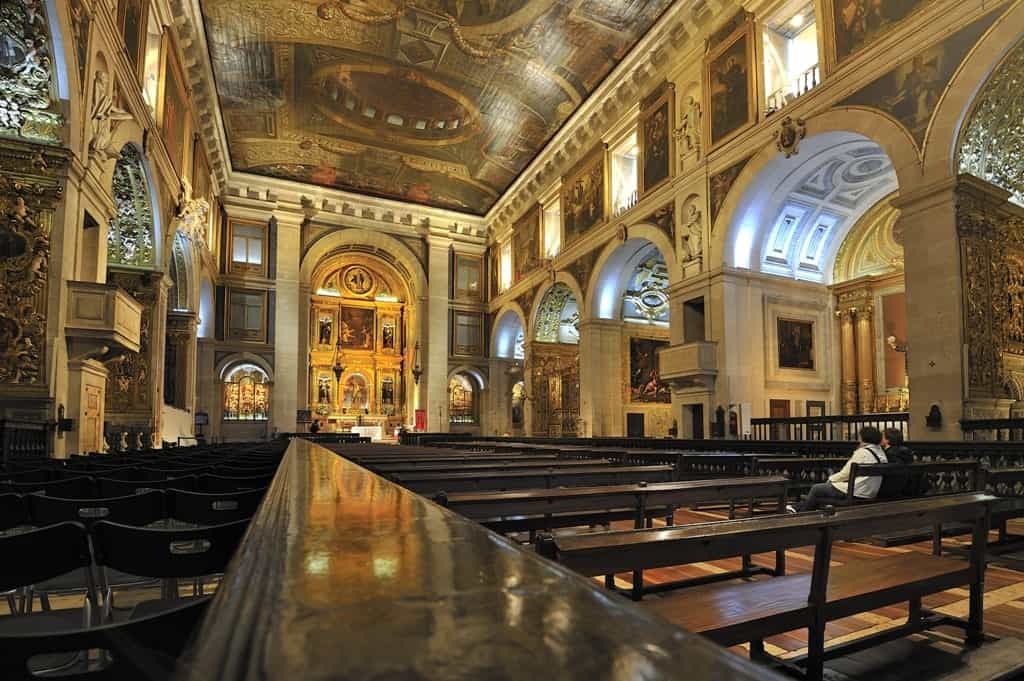
The Igreja de Sao Roque is the first Jesuit church in Portugal and one of the most important in the Jesuit community. Its gilded interior is absolutely stunning; it is one of the most decorated and elaborate church interiors in Lisbon, through its whitewashed facade does not give this away. It is located on the main street in Bairro Alto, steps from the Rossio train station and Gloria elevator.
Elevador of Gloria and Bica
The elevador of Gloria and Bica are two of the funiculars that ferry people from the lower streets of Lisbon to the Bairro Alto district. Both opened in the late 19th century and are popular with locals and tourists.

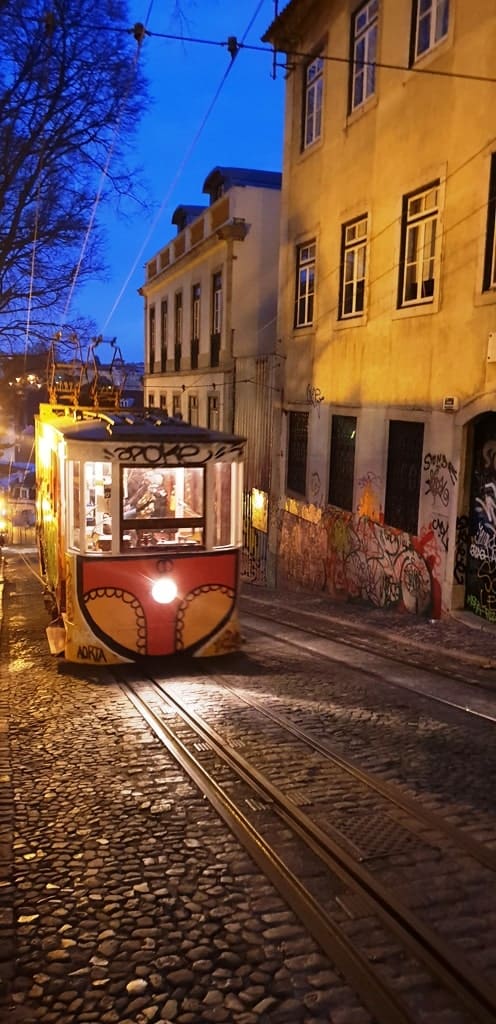
Spend a night in the Bairro Alto, one of Lisbon’s hottest nighttime neighborhoods. Enjoy a fado performance, traditional Portuguese music, and song, in one of the local bars. While there are many large and touristic fado bars scattered across the Bairro Alto and nearby Alfama, seeking out a small neighborhood bar will provide you with an unforgettable memory of your four days in Lisbon.
4 days in Lisbon: Day Two – Explore Alfama and Portugal’s Cultural History
Alfama is one of Lisbon’s oldest and most traditional neighborhoods. The narrow, winding streets rise from the banks of the Tagus through crumbling houses along with brick lain paths. In the evenings, fado music drifts from tiny bars. It is a wonderful place to explore and a must-see addition to any four-day Lisbon itinerary.
The Castelo de Sao Jorge

The Castelo de Sao Jorge is a Moorish castle that towers over Lisbon from the top of the Alfama district. Built in the 12th century and expanded in the 13th and 14th, much of the modern-day castle was restored in the 1920s after being destroyed by the 1755 earthquake.

Sé de Lisboa

The Sé de Lisboa, usually the Sé, is the Cathedral of Lisbon. Dating from the 12th century and predominantly Romanesque, the cathedral remarkably withstood the 1755 earthquake that damaged most of the city.
Igreja de Santo António

Igreja de Santo António is a charming little Baroque church in Alfama, on the path of the 28 tram. It is named for the patron saint of Portugal, St Anthony, and is considered to be on the site of his birthplace. Fun fact: St Anthony is also the patron saint of lovers, and consequently this is also one of the most romantic places in Lisbon.
The Portas do Sol viewpoint

Perfectly located along the road between the cathedral and the castle, the Portas do Sol viewpoint is one of the best in Lisbon. It is also one of the most popular, with views of the Tagus estuary and red-tiled roofs.
Ride the quaint number 28 tram
The number 28 tram is not only one of the oldest in Lisbon, it is also one of the most popular and most scenic routes. Winding its way through the Alfama, Baixa, Graca, and Estrela districts, the tram’s tiny body allows it to follow the narrow, steep streets. While it provides an exceptional overview of the city and makes for a perfect tour, beware of pickpockets.
Wander in the Alleyways
To get a real taste of Lisbon life, explore the alleys off the main streets. Here, you’ll find local shops, private homes, and incredible street art that the average tourist won’t see.
Miradouro da Graça viewpoint

The Miradouro da Graça viewpoint is a popular viewpoint as it has beautiful views of the castle. It is located at the edge of a shaded park, near the number 28 tram line. The surrounding local neighborhood is a great place to stop for local pastries or coffee.
Or Miradouro da Santa Luzia viewpoint
The Miradouro da Santa Luzia viewpoint is tucked away behind a tiny white church in a shady garden lined with blue and white tiles and a number of leafy trees. It offers the same views as the Graça viewpoint but is significantly less crowded with tourists.
Fado Museum
The Museu do Fado is a museum dedicated to the traditional music of Portugal. Through audiovisual and interactive means, the museum explores the evolution and passion of fado.
-20% with Lisbon Card
National Pantheon

Built in the 17th century as the Church of Santa Engraçia, the building was converted into the National Pantheon in the 20th century. Here is where many important Portuguese people are buried.
Free entry with a Lisbon Card.
Time Out Market

The Time Out Market is a massive food hall located within the Mercado da Ribeira. Housing some of Lisbon’s best chefs, restaurants, cultural events, and even cooking workshops, the market spans over ten thousand square feet of food stalls. It is definitely worth a visit while in Lisbon!

Museu Nacional de Arte Antiga
Museu Nacional de Arte Antiga is the national art museum in Portugal. Housed within the Palacio de Alvor-Pombal, its collection is one of the most extensive and important collections of Portuguese Middle Ages works of art.
Free entry with a Lisbon Card.
4 days in Portugal: Day Three – Portuguese Art Through the Ages
Portugal’s art scene ranges from traditional tile making (some more traditional than others) to vibrant street art, impressive architecture, and a style all its own. Spend today exploring the art scene through the ages.
Museo de Azulejos

The Museo de Azulejos showcases the famous art of Portuguese tile making. With a collection spanning centuries, housed in a 500-year-old former convent, the museum is well worth a visit. In addition to the ubiquitous tile, a true Portuguese icon, the museum has sculptures, paintings, documents, and more.





Upon leaving the Museo de Azulejos, head for Belem. Located below the Ponte 25 de Abril, Belem is home to some of Lisbon’s most impressive buildings, such as the Jeronimos Monastery and the Torre de Belem. You can get there by bus from the city center; it is about 6km away.
Free entry with a Lisbon Card.
Mosteiro dos Jeronimos
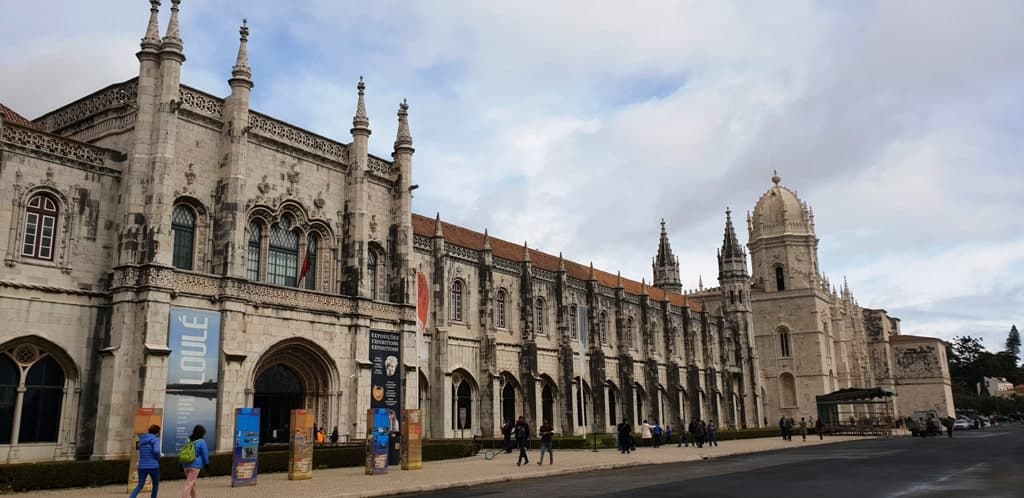
The Jeronimos Monastery is one the best examples of Late Gothic Manueline architecture, which is an elaborately decorated style featuring maritime elements – a nod to Portugal’s strong naval heritage. The complex spans a large city block, and among the most visited buildings are the cloisters and the Church of Santa Maria.
Free entry with a Lisbon Card.


National Archaeology Museum

The National Archaeology Museum is located adjacent to the Jeronimos Monastery and is the most important archaeological museum in Portugal. Home to artifacts from the Paleolithic era through to the Middle Ages, the museum’s collections include Egyptian mummies, Roman bronzes, Roman mosaics (some of the most important pieces of art in Portuguese history), and Classical Greek sculptures.

Much of the collection was private before being gifted to the museum. The main benefactor, Jose Leite de Vasconcelos, was a prominent Portuguese archaeologist whose dream was to showcase the history of Portugal and the Portuguese man in a museum.
Free entry with a Lisbon Card.
Padrão dos Descobrimentos

The Padrão dos Descobrimentos is a monument across from the Jeronimos Monastery, along the river where ships left for China and India. It celebrates the Age of Discovery and the many Portuguese navigators who explored in the 15th and 16th centuries.

The sides of the monument are lined with statues of over 30 people including Henry the Navigator, Vasco da Gama, and Ferdinand Magellan.
– 20% with Lisbon Card
Torre de Belem

Along with the nearby monastery, the Torre de Belem (Tower of Belem) is a UNESCO World Heritage Site. It was built in the 16th century on a small island near the shore and acted as part of the defense system of the city. Much of the tower is in the Manueline style, though it incorporates other architectural influences, namely Moorish styles.
Free entry with a Lisbon Card.
Pastéis de Belem

Pastéis de Belem is home to the original Pastel de Nata, an egg custard tart dusted with cinnamon. Made originally by the monks, the shop opened in the mid-19th century by the owners of a sugar cane refinery who bought the recipe from the monks. The shop is still owned by this family and is one of the best places to try these delectable treats.
Ajuda National Palace

The Ajuda National Palace is one of the Royal Family palaces in the area between Belem and the city center. It was built following the 1755 earthquake but took years to finish (the Royal Family fled to Brazil before it was done). No one lived in it until the late 19th century. Today, it is a museum.



In the afternoon head for the LX Factory to see some of Lisbon’s trendiest companies, from boutiques to bars.
Free entry with a Lisbon Card.
LX Factory

LX Factory is a former industrial complex in Alcantara that now features some of Lisbon’s hottest restaurants, bars, boutiques, and street art. Alcantara, once a sleepy neighborhood under the Ponte 25 de Abril (April 25th Bridge), is now a buzzing hub of creativity, where design and production companies, fashion and art shows, music events, and more share space with hip restaurants, bars, and shops. The complex is also where you’ll find some of Lisbon’s hottest nightlife.
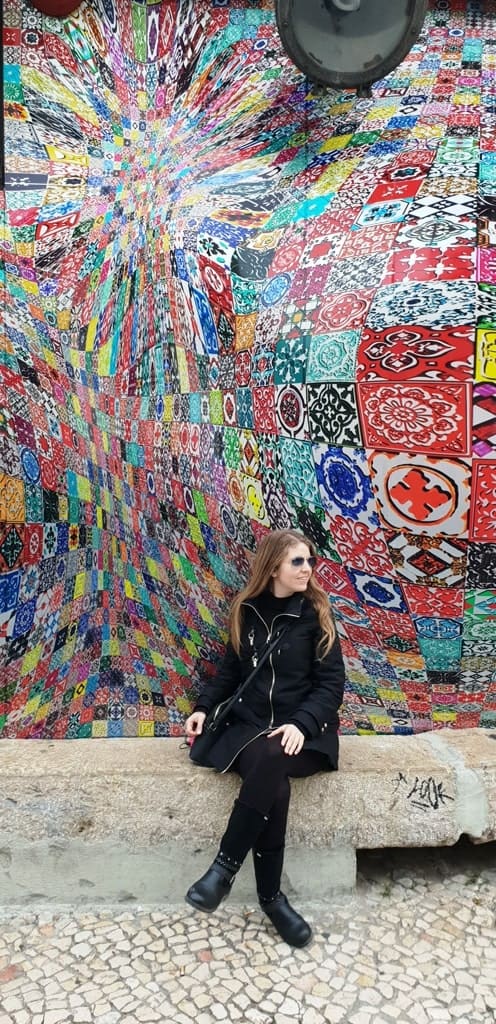
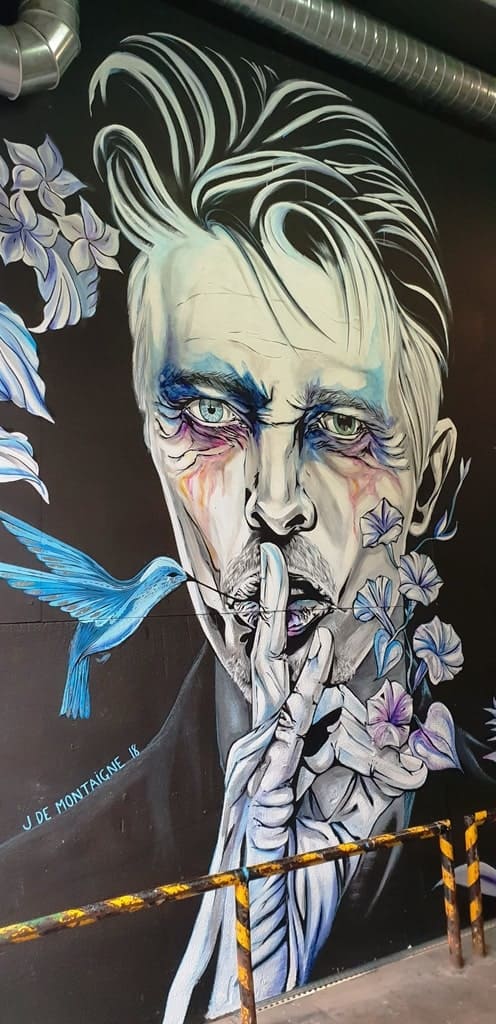
Be sure to spend time here, where modern trendsetters tread the same paths as the navigators of times past. Belem is a thriving neighborhood and very much at the beating heart of Lisbon’s heritage.
4 days in Lisbon: Day Four Sintra

Lisbon has many delightful neighboring towns, but one of the most popular is Sintra. Known for its many palaces, Sintra is just 30 minutes (25km) from Lisbon, and with its picturesque, colorful palaces and stunning scenery is well worth a day trip.
How to Get yo Sintra
The best way to get to Sintra from Lisbon is by train. Trains run from Rossio station every 30 minutes into the Sintra station, which is 1.5km from the historic center. Simply follow the signs for “centro” to get to the historic center of Sintra.
Free transportation with the Lisbon Card.
Palacio da Pena

The Palacio da Pena is likely the most famous of Sintra palaces. With its brightly coloured towers and mountaintop location, it is a stark contrast to the dark forest around it. Towering above the town, it is one of the most popular destinations and will be very crowded, no matter what time of year or day you visit.
-10% with Lisbon Card



Palacio Nacional de Sintra

The Palacio Nacional de Sintra, or the National Palace of Sintra, is located in the historic center of town. Its white gothic exterior is distinctly different from the colorful facades of the Pena Palace but the interiors are no less elaborate, although they are different. It is also the most used of the royal palaces, as it was a favorite of the Royal Family from the 15th through the 19th centuries.
-10% with Lisbon Card

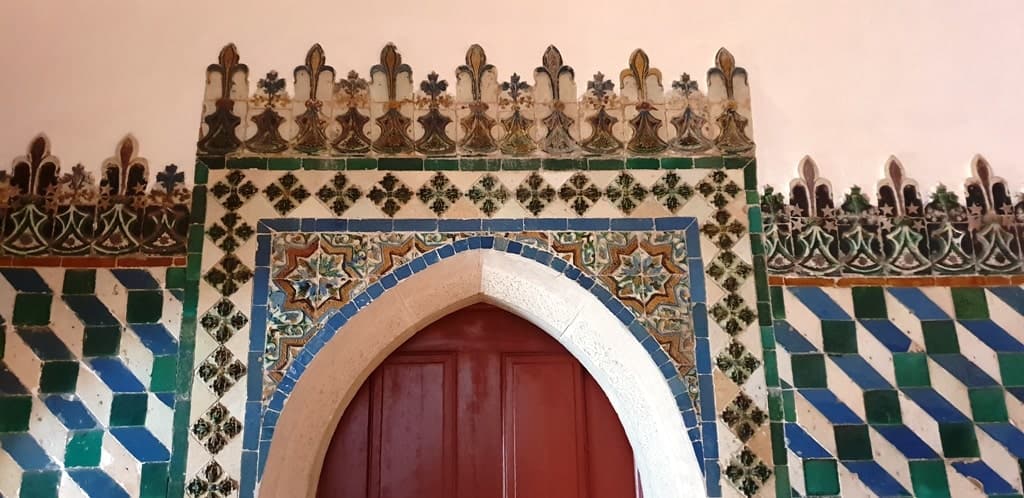
Castelo de los Mouros

The Castelo de los Mouros is the name for the Moorish castle ruins that are along the same mountaintop ridge as the Pena Palace. Left to ruin in the 12th century, the ruins were restored rather romantically in the 19th century and are intertwined with the surrounding forest. The views from the top are spectacular, and the castle grounds are far less crowded than the Pena Palace.
-15% with Lisbon Card
Alternatively, you can book a small group full day tour from Lisbon to Sintra and Cascais.
Lisbon is a charming European city. Its history and culture rival that of Madrid or Paris while its vibrant nightlife and shopping are on par with Barcelona or Milan. Four days in Lisbon is a great introduction to this exciting city and its neighboring towns. I enjoyed my entire trip to Lisbon and hope that, with the help of my Lisbon itinerary, you will too!
